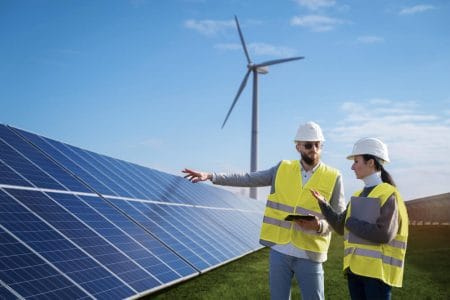
In recent years, the construction industry has been undergoing a transformative shift towards sustainability. Amid growing environmental concerns, eco-friendly building materials have surged to the forefront, offering both environmental benefits and efficiency in construction practices.
These materials are not just about reducing the environmental footprint but are also about reshaping how we think about design and long-term sustainability in construction.
Understanding Eco-Friendly Building Materials

Eco-friendly building materials are those that are designed to minimize environmental impact. These can include materials that are recycled, sustainably sourced, highly durable, or that have low emissions during their lifecycle. The use of such materials is crucial in promoting environmental sustainability as they often require less energy to produce, reduce waste, and decrease the carbon emissions associated with building.
The Benefits of Using Sustainable Materials
The primary benefit of using eco-friendly building materials is the significant reduction in environmental impact. For instance, traditional cement production is one of the largest sources of carbon dioxide emissions worldwide. By switching to sustainable alternatives like fly ash or recycled glass concrete, the industry can drastically reduce these emissions.
Moreover, sustainable materials often come with better durability and efficiency. Materials like bamboo, which is not only sustainable but also incredibly strong and versatile, can last longer and withstand harsh conditions better than traditional wood.
This not only makes it a great choice for a wide range of uses but also means less need for replacements and maintenance, further reducing the material’s environmental impact over its lifetime.
Leading Eco-Friendly Materials Transforming Construction
- Bamboo: Known for its rapid growth and high strength, bamboo is an excellent alternative to wood. It can be used for structural works, flooring, and paneling, providing a robust, renewable resource that decreases deforestation rates.
- Recycled Plastic: Instead of heading for landfills, plastic waste can be transformed into bricks, panels, and other construction materials. These are not only lighter than traditional materials but also resistant to corrosion, decreasing the overall environmental toll.
- Hempcrete: Made from the woody fibers of the hemp plant, hempcrete is a bio-composite material that acts as an insulator and moisture regulator. This material is not only sustainable but also provides a healthier living environment by reducing toxins in the air.
- Cork: Renowned for its sustainability and durability, cork is harvested from the bark of the cork oak tree, which regrows over time. It provides excellent insulation and is also naturally resistant to mold, mildew, and termites, making it an ideal material for flooring and insulation.
- Reclaimed Wood: Utilizing wood from demolished buildings or unused structures not only prevents waste but also gives a second life to the material. Reclaimed wood can be used for structural components, flooring, and decorative elements, offering a rustic charm and reduced environmental impact.
Challenges and Considerations
While the benefits of eco-friendly building materials are clear, there are several challenges to their widespread adoption. Cost is often a significant barrier, as many sustainable materials come with higher upfront prices compared to conventional options.
However, it’s important to consider the long-term savings through reduced maintenance and energy costs.
Availability and regional suitability also play critical roles. Some materials may not be readily available in certain regions, or they might not be suitable for all types of climates and environments. Education and awareness are crucial in overcoming these challenges.
As more builders and consumers understand the benefits and potential of sustainable materials, the demand and, consequently, the supply chain will likely improve.
The Future of Construction with Eco-Friendly Materials
Looking ahead, the future of construction lies in innovation and sustainability. As technology advances, we can expect the development of new materials and improved methods of producing and utilizing existing materials. Moreover, regulatory support and incentives for using eco-friendly materials can accelerate their adoption.
Eco-friendly building materials are not just a trend but a necessary shift in the construction industry. By embracing these materials, we contribute to a more sustainable world, promoting not only environmental health but also creating economically viable and socially responsible solutions. The revolution in modern construction is here, and it is decidedly green.



